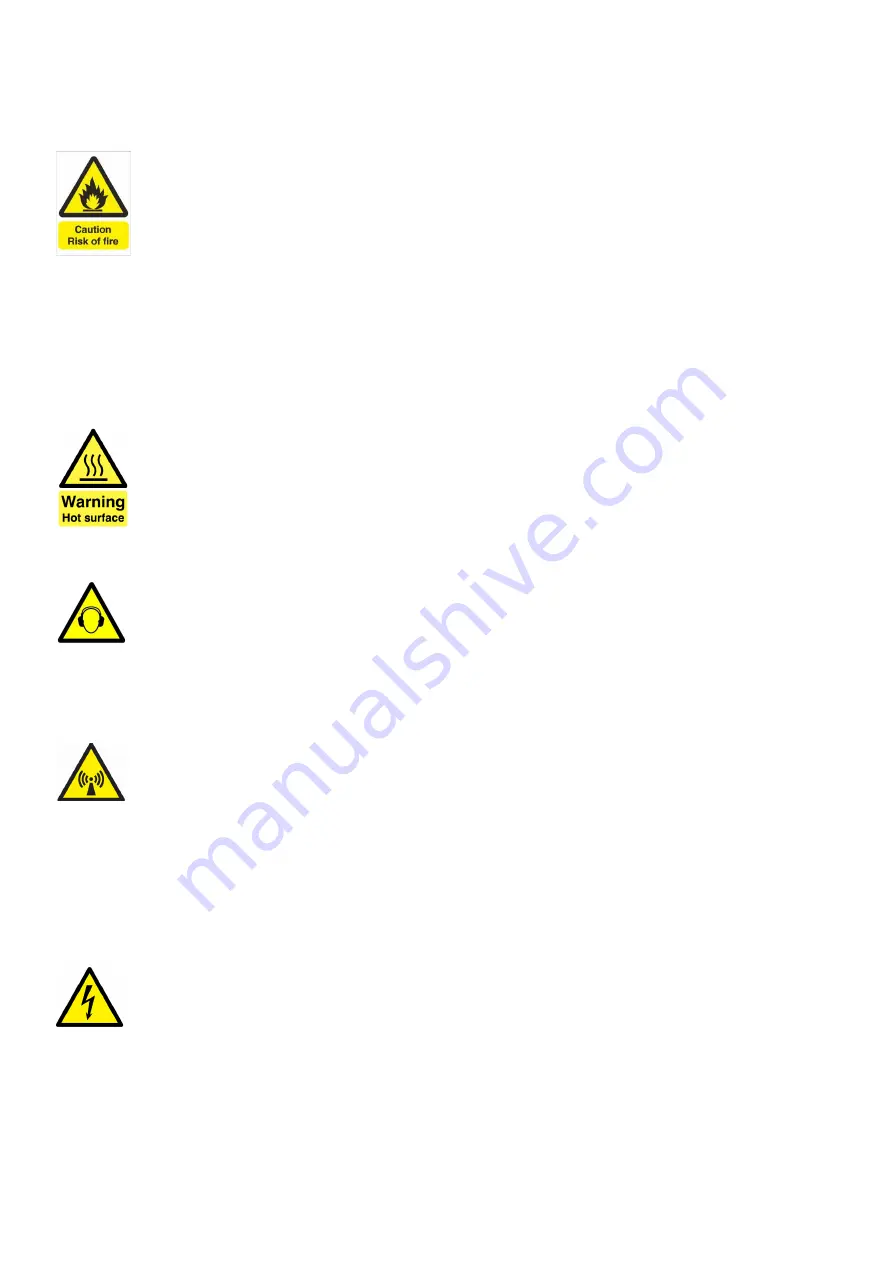
8
SAFETY INSTRUCTIONS
Fire awareness
The cutting and welding process can cause serious risks of fire or explosion.
Cutting or welding sealed containers, tanks, drums or pipes can cause explosions.
Sparks from the welding or cutting process can cause fires and burns.
Check and risk assess the area is safe before doing any cutting or welding.
Ventilate all flammable or explosive vapour from the workplace.
Remove any and all flammable materials away from the working area. If necessary, cover flammable
materials or containers with approved covers (following manufacturers instructions) if unable to remove
from the immediate area.
Do not cut or weld where the atmosphere may contain flammable dust, gas or liquid vapour.
Always have the appropriate fire extinguisher nearby and know how to use it.
Hot parts
Always be aware that material being cut or welded will get very hot and hold that heat for a
considerably long time which will cause severe burns if the appropriate PPE is not worn.
Do not touch hot material or parts with bare hands.
Always allow for a cooling down period before working on material recently cut or welded.
Use the appropriate insulated welding gloves and clothing to handle hot parts to prevent burns.
Noise awareness
The cutting and welding process can generate noise that can cause permanent damage to your
hearing. Noise from cutting and welding equipment can damage hearing.
Always protect your ears from noise and wear approved and appropriate ear protection if
noise levels are high.
Consult with your local specialist if you are unsure how to test for noise levels.
RF Declaration
Equipment that complies with directive 2014/30/EU concerning electromagnetic compatibility
(EMC) and the technical requirements of EN60974
-
10 is designed for use in industrial buildings
and not for domestic use where electricity is provided via the low voltage public distribution
system.
Difficulties may arise in assuring class A electromagnetic compatibility for systems installed in domestic
locations due to conducted and radiated emissions.
In the case of electromagnetic problems, it is the responsibility of the user to resolve the situation.
It may be necessary to shield the equipment and fit suitable filters on the mains supply.
LF Declaration
Consult the data plate on the equipment for the power supply requirements.
Due to the elevated absorbance of the primary current from the power supply network, high
power systems affect the quality of power provided by the network. Consequently, connection
restrictions or maximum impedance requirements permitted by the network at the public network
connection point must be applied to these systems.
In this case, the installer or the user is responsible for ensuring the equipment can be connected,
consulting the electricity provider if necessary.
Summary of Contents for EVO 2.0 EP-45
Page 1: ...1 ClearVision Optional TFT LCD screen included...
Page 44: ...44 UKCA Declaration of Conformity...
Page 45: ...45 EC DECLARATION OF CONFORMITY...
Page 50: ...50...









































